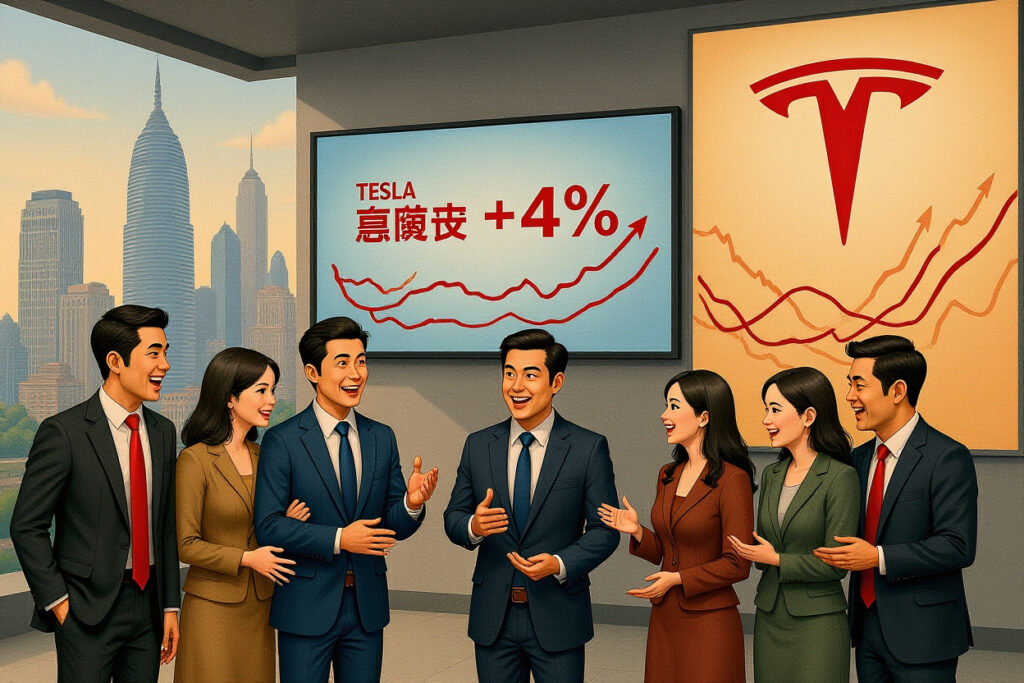Executive Summary
– Gold prices surged to record levels, with spot gold exceeding $3,720 per ounce, marking a 42% year-to-date increase.
– Federal Reserve rate cuts and hints of further easing are primary catalysts, boosting investor confidence in gold.
– Major institutions like JPMorgan and UBS revised targets upward, forecasting prices could reach $4,000-$5,000 per ounce by 2026.
– Geopolitical risks and central bank buying provide structural support, reinforcing gold’s role as a safe-haven asset.
– Chinese gold stocks rallied sharply, highlighting opportunities in A-shares for global investors seeking exposure.
Gold Prices Scale Unprecedented Heights
The gold market is witnessing history as prices exploded to new all-time highs, with spot gold climbing above $3,720 per ounce on September 22. This represents a staggering 42% increase since the start of the year, underscoring a powerful bull run that has captivated investors worldwide. The daily gain of over 1% is part of a broader trend that began in late August, accumulating a 12% rise in just over a month. This gold price surge is not an isolated event but a reflection of deep-seated macroeconomic shifts.
Parallel movements were observed in equity markets, particularly among gold-related stocks. In the U.S., pre-market trading saw companies like Barrick Gold and Newmont Mining advance by more than 2.5%, while in China’s A-share market, firms such as Shengda Resources hit the daily limit-up, and Zhongjin Gold surged over 9%. This synchronized rally highlights the global resonance of the gold price surge, affecting portfolios from Wall Street to Shanghai.
Technical Breakouts and Market Sentiment
Analysts point to technical indicators reinforcing the bullish outlook. The breach of key resistance levels, such as $3,708 for gold, signals potential for further gains. Soni Kumari, a commodity strategist at ANZ, noted that expectations of additional Fed rate cuts are fueling optimism. This gold price surge is supported by a confluence of factors, including institutional buying and retail investor interest, creating a feedback loop that propels prices higher.
Federal Reserve Policy as a Catalyst
The Federal Reserve’s decision to cut interest rates by 25 basis points in September, lowering the federal funds rate to 4.00%-4.25%, has been a pivotal driver. The accompanying dot plot indicated a median expectation of three rate cuts in 2025, up from two previously, signaling a sustained easing cycle. This monetary policy shift reduces the opportunity cost of holding non-yielding assets like gold, making it more attractive amid declining real yields.
Market participants are closely watching upcoming data, such as the U.S. Personal Consumption Expenditures price index, for clues on inflation trends. A slowdown could strengthen the case for further cuts, potentially extending the gold price surge. Fed Chair Jerome Powell’s recent remarks on the economic outlook have also underscored a cautious approach, adding to the supportive environment.
Implications of Fed Independence Concerns
Uncertainty around Fed independence, exacerbated by political pressures, introduces additional upside risk. For instance, a newly appointed Fed governor advocated for more aggressive cuts, diverging from consensus views. Historical analysis from JPMorgan shows that gold typically outperforms during Fed easing cycles, with an average double-digit return in the nine months following rate cuts. This gold price surge could intensify if political interference escalates, as seen in past episodes.
Institutional Forecasts and Price Targets
Leading financial institutions have raised their gold price projections, reflecting growing confidence in the rally. JPMorgan now expects spot gold to reach $3,800 per ounce by Q4 2025 and breach $4,000 in early 2026, with a scenario analysis suggesting $5,000 if Fed independence is compromised. Similarly, UBS revised its target to $3,800 by end-2025, up from $3,500, citing weak employment data and geopolitical tensions.
Goldman Sachs maintains a bullish stance, holding a $3,700 year-end 2025 target but highlighting the potential for prices to exceed $4,500 if retail investors increase allocations. The bank estimates that a mere 1% shift from U.S. Treasuries to gold could push prices toward $5,000. These forecasts underscore the structural nature of the gold price surge, driven by both cyclical and secular factors.
Comparative Analysis of Bank Projections
A side-by-side review of institutional reports reveals a consensus on upward momentum. Key drivers include central bank diversification, with entities like the People’s Bank of China increasing gold reserves to hedge against dollar risks. For more details, refer to the Federal Reserve’s latest statements on monetary policy. This gold price surge is partly attributed to sustained official demand, which accounts for over 20% of annual global consumption.
Underlying Drivers of the Rally
Beyond Fed policy, several factors are fueling the gold price surge. Geopolitical instability, such as conflicts in Ukraine and Gaza, has amplified safe-haven demand. Additionally, trade tensions under potential U.S. administrations could disrupt global growth, reinforcing gold’s appeal. Central bank buying remains robust, with global reserves expanding by 15% year-over-year, according to World Gold Council data.
On the demand side, ETF holdings are approximately 3,000 tons, still below the 2020 peak of 3,500 tons, indicating room for growth. Chinese investors, in particular, are increasing exposure through A-share gold stocks, which offer liquidity and leverage to price movements. This gold price surge is thus supported by a broad base of participants, from institutional funds to individual traders.
Role of De-Dollarization Trends
The strategic shift away from U.S. dollar assets is another critical element. Countries like Russia and China are accumulating gold to reduce dependency on the dollar, a trend accelerated by sanctions and trade disputes. This structural demand provides a floor for prices, ensuring that the gold price surge has fundamental backing. Analysts at Huatai Securities emphasize that diversification needs will persist, regardless of short-term fluctuations.
Investment Strategies for Chinese Equities
For investors focused on Chinese markets, the gold price surge presents unique opportunities. Gold mining stocks on the Shanghai and Shenzhen exchanges have outperformed, with companies like Western Gold and Sichuan Gold posting gains exceeding 8%. These equities offer leveraged exposure to rising prices, though they carry higher volatility. Portfolio managers recommend a balanced approach, blending physical gold ETFs with select miners for optimal risk-adjusted returns.
Sector-specific factors, such as production costs and regulatory support in China, enhance the appeal. The government’s focus on commodity security aligns with long-term gold demand, making related stocks a strategic holding. This gold price surge could benefit sectors beyond mining, including jewelry and technology, where gold is used in components.
Risk Management Considerations
While the outlook is positive, investors should monitor risks like sudden Fed policy reversals or dollar strength. Diversification across geographies and asset classes can mitigate drawdowns. Historical data shows that gold correlates weakly with equities during crises, providing hedge benefits. Thus, allocating 5-10% to gold or gold-linked assets is prudent in current conditions.
Forward-Looking Market Guidance
The gold price surge is likely to persist into 2026, driven by enduring macroeconomic supports. Key indicators to watch include U.S. inflation data, central bank purchasing patterns, and geopolitical developments. Investors should position for a scenario where gold reaches $4,000-$5,000, as projected by major banks, by maintaining exposure through ETFs, futures, or equities.
In Chinese markets, focus on firms with strong fundamentals and low debt, as they are better positioned to capitalize on price increases. The ongoing gold price surge underscores the metal’s role in a diversified portfolio, especially amid uncertain times. Staying informed through reliable sources like the Shanghai Gold Exchange announcements is crucial for timely decisions.
Actionable Steps for Investors
To leverage this trend, consider increasing allocations to gold-backed instruments gradually. Review portfolio weightings quarterly, and use dips as buying opportunities. Engage with financial advisors to tailor strategies to individual risk profiles, ensuring alignment with long-term goals amid this historic gold price surge.
Synthesizing Key Insights
The unprecedented rise in gold prices reflects a perfect storm of monetary easing, geopolitical strife, and structural demand shifts. With institutions forecasting further gains, the rally has substantial momentum. For global investors, particularly in Chinese equities, this gold price surge offers a chance to enhance returns while hedging against volatility.
Moving forward, remain agile by tracking Fed communications and market data. The gold price surge is a testament to gold’s enduring value, and proactive positioning can yield significant benefits. Start by reassessing your asset allocation today to capture the opportunities presented by this dynamic market.




